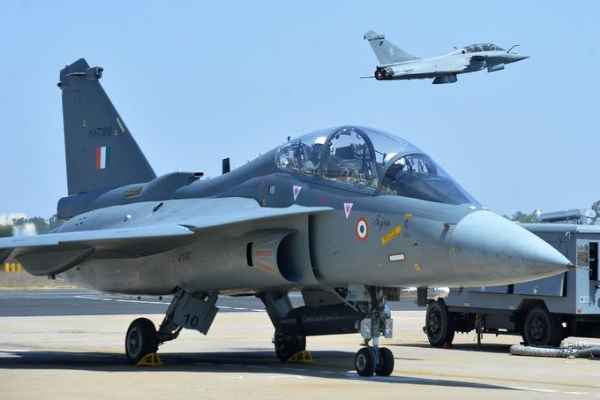$500 million defense package for India being considered by the US: Bloomberg
Researchers at the Stimson Center calculate that thanks to decades of collaboration, India’s major weapons are overwhelmingly — about 85% — of Russian origin.
Total Views |
Washington D.C., Aug 30: The Indian government’s unwillingness to condemn Russia forcefully for its invasion of Ukraine seems to have woken up leaders in Washington to a long-simmering problem: how to wean the Indian military off its dependence on Russian arms. According to Bloomberg News, the U.S. government is considering a $500 million defense package for India, to finance the purchase of US weapons systems.

While half a billion dollars may seem like a lot of money, it really isn’t when compared to the scale of the problem. Until recently, India bought almost all its frontline weaponry from Russia. Researchers at the Stimson Center calculate that thanks to decades of collaboration, India’s major weapons are overwhelmingly — about 85% — of Russian origin.
Moreover, the Stockholm International Peace Research Institute says that “new orders [from India] for a variety of Russian arms in 2019–20 … will probably lead to an increase in Russian arms exports in the coming five years.” Fixing the problem is going to take time. And it won’t happen unless the Indian defense establishment is willing to make some hard choices. The fact is that, like all developing nations, India confronts an impossible trinity when it comes to weapons programs: It cannot simultaneously achieve autonomy, affordability, and quality. Shifting toward buying more Western weapons systems and lessening its dependence on Russia, for instance, would bolster India’s autonomy. But the country would have to sacrifice affordability, meaning it wouldn’t be able to buy as much. India is spending $5.5 billion on the Russian S-400 surface-to-air missile platform. The U.S.-made Terminal High-Altitude Area Defense system costs about six times that much and isn’t even as versatile. Suppose India wants both affordability and quality. Well, some countries have historically gotten by with fewer but more potent weapons — often because they’re closely tied to the West or to China, and benefit from the protection of their allies. But India — with one prickly, giant neighbor to its north and one slightly smaller but still nuclear-armed neighbor to its west, and continents away from friends who could help in a conflict — is highly unlikely to want to rely on anyone else for essential defense requirements. In its last full-scale war with Pakistan, in 1971, India found itself constantly short of artillery shells and had to secretly import mortars from Israel with which it didn’t even have full diplomatic relations at the time. Defense planners’ memories are long. Insufficient weapons on hand represent a loss of autonomy that no Indian government could possibly countenance.
For decades, India has tried to establish a local defense industry, building its own battle tank and jet. Unfortunately, our military hates the results — the Arjun tank and the Tejas fighter. The Arjun, the Indian Army complains, can’t be part of any battle plans on the canal-heavy, the militarized border with Pakistan: It weighs almost 70 tons and would collapse most bridges in Punjab. (By contrast, Russia’s T-90 tank weighs less than 50 tons.) Meanwhile, the Indian Air Force has a long list of reasons why the Tejas are not good enough: Its payload is smaller than the F-16s, the plane takes too long to serve, and so on. In the short run, indigenization offers affordability and autonomy, at the cost of quality. The question is whether India has the patience and political will to fight through early stumbles. China’s government invested for decades in the Shenyang J-8 fighter jet, which was significantly less sophisticated than other interceptors of its time. Indian defense analysts might point out that it’s only through buying large numbers of subpar equipment, for decades, that China finally built the Chengdu J-20 stealth jet, which may well be a “near-peer” of US fifth-generation fighters.

